Bloating and indigestion are never pleasant, regardless of the cause—it could be stress, that late-night munch, or that sandwich. In addition, gastrointestinal problems can progress to more serious and incapacitating chronic medical disorders such as Crohn’s disease and inflammatory bowel syndrome.
Improving digestion would help everyone, even if we aren’t dealing with a dire prognosis. That’s the point of yoga.
9 Yoga Poses to Boost Digestion & Gut Health
Cat-Cow Pose (Marjaryasana-Bitilasana)
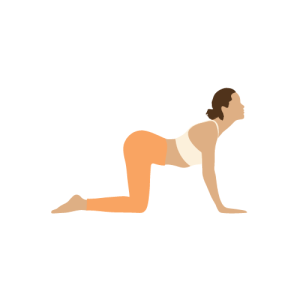
In Marjaryasana, also known as Cat Pose, you should round your upper back toward the sky as you exhale, look down at your navel, and firmly plant your hands and feet on the floor. Ongoing for a total of ten rounds.
Bend at the waist and place your hands and knees under your shoulders. Enter Bitilasana (Cow Pose) with inhalation as you lower your belly button to the earth and raise your hips and heart to the sky. Distancing your shoulders from your ears is important.
Deep breathing in these positions will stimulate internal organ massage as you extend and compress the intestines in alternating cycles, bringing blood to the epithelial cells that regulate gut function.
Also Read: Chakra Asana And Its Benefits
The downward-facing dog pose (Adho Mukha Svanasana)
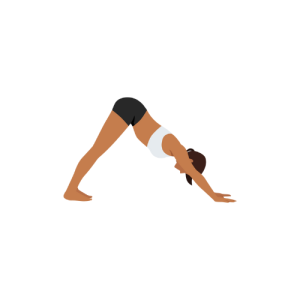
To prepare your hands and feet, go into plank position. Hold your hands shoulder-width apart and your feet hip-width apart. Then, with your abs engaged, lift and lower your hips. To widen your back, extend your spine by bending your knees slightly and spreading your shoulders wide.
As you exhale, draw your belly button in toward your spine in Down Dog for a series of deep breaths. Take five to ten deep breaths.
The Extended Triangle Pose (Utthita Trikonasana)
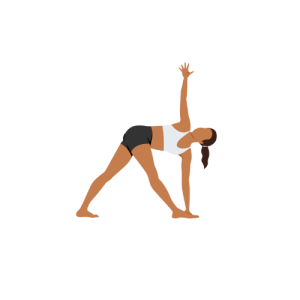
After coming out of Down Dog, straighten your left leg and move forward with your left foot to form a high lunge. Keep your toes pointed toward the front right corner of the mat as you step forward six inches on your right foot. Always maintain a flat foot. Turn your core to the right and widen your hips. Raise your right palm toward the sky, palm facing outward, and place a small amount of pressure on your left shin, a block, or the floor with your left hand. Lengthen your neck and bring your tailbone in line with your right heel to create a forward bend. Before swapping sides, breathe deeply into Utthita Trikonasana for 5–10 breaths. Then, transition to Parivrtta Trikonasana.
Also Read: Raja Yoga: Meaning, Types, & Benefits
The Revolved Triangle Pose (Parivrtta Trikonasana)
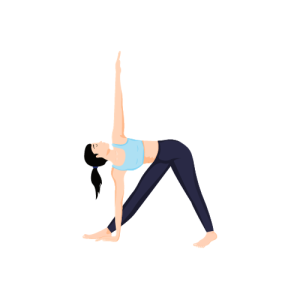
Drop your right palm to the floor and bring your hips together, making sure your right and left hips are parallel. To maintain a steady and powerful stance, tighten your quadriceps and maintain a small bend in both knees. With your palm facing away from your body, extend your left arm toward the sky while you twist to the left. Hold this position for five breaths, and then switch sides and repeat Utthita Trikonasana and Parivrtta Trikonasana.
This position stimulates the organs by squeezing and releasing the colon. People who suffer from inflammatory bowel disease should exercise caution while striking this position since it could put unnecessary strain on their organs.
The Extended Puppy Pose (Uttana Shishosana)
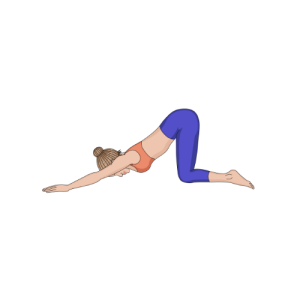
Bend over the tabletop and get on all fours. The next step is to lower your body until you can let your head rest on the floor or a block while keeping your hips in their original positions. Separate your shoulder blades from each other to open your shoulders. Let gravity loosen its grip on your heart.
If you suffer from abdominal cramps after eating a heavy meal, try extending your abdomen in the Uttana Shishosana pose.
Also Read: Learn About The Extended Puppy Pose And Its Benefits
The Bridge Pose (Setu Bandha Sarvangasana)
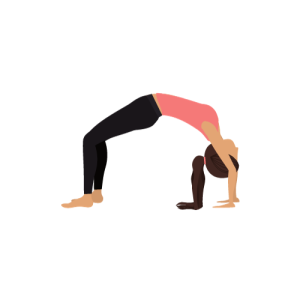
For those who suffer from digestive issues, Bridge Pose is an excellent backbend that can help alleviate exhaustion by compressing the organs and bringing fresh circulation to the heart.
Lying on your mat, bring your feet flat on the floor, as close to your sitting bones as you can, to achieve this pose. With an exhalation, bring your hips up toward the ceiling while extending your knees forward. Firm your inner feet and arms against the floor. To make the backbend less active, put a block under your sacrum. Here, you can take ten deep breaths before gently releasing yourself by rolling your spine down.
Also Read: Sarvangasana Pose and Benefits
Half Gas-Release Pose (Ardha Pawamuktasana)
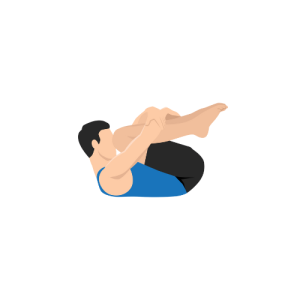
You need to go no farther than the name of this position to learn about its restorative properties:
Pawan refers to gases or air. “Mukta” implies liberation. By putting pressure on the right ascending colon and the left descending colon, this position stimulates the nerves that help in excretion. Wrap your right leg around your right rib cage and pull it in. Do not let up on firmly planting your left leg into the ground. To draw it closer, you can wrap your hands around your right shin. Keep it for one to two minutes. Continue with the opposite side.
Seated Spinal Twist (Supta Matsyendrasana)
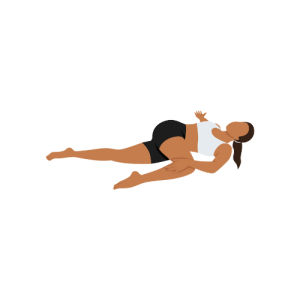
To perform a Supine Twist from Bridge Pose, bring your feet together, extend your right arm straight out to the side, and let your knees fall to the left. Letting your left hand softly rest on your right knee can help you stretch further. Additionally, you have the option to straighten and extend your right leg to the left. Point your left hand in the direction of your right foot’s outer digits or toes. As long as it’s pleasurable, savor this profound twist. Get back to the middle and do it again on the opposite side.
The Corpse Pose (Savasana)
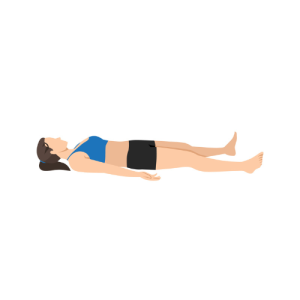
To counteract the bending of your spine in Supine Twist, fold your knees into your chest. By putting pressure on the transverse colon, this frontal compression will help with elimination. The next step is to slowly lower your legs to the floor while placing your palms facing up against your hipbones. An alternative is to roll up a towel or blanket and put it beneath your knees. As you release any tension in your muscles, let your breathing become automatic.
The most important aspect of yoga is calming the nervous system and poses like Savasana do just that.
Conclusion
Taking a more all-encompassing view of health helps us recognize the inseparable relationship between our physical and mental health. Our gut health has an impact on and influences all three of these aspects of our well-being—physical, mental, and emotional. A big part of maintaining our holistic health is what we eat, how we handle stress, and the behaviors we follow every day.
Yoga has the potential to impact our digestive health in many ways. By bringing harmony to our astral, or energy, body, digestive yoga can also help keep physical problems at bay. If you want a happier, healthier gut, try incorporating some of these yoga postures into your routine. They will improve your digestive function. To learn more about these yoga poses under the guidance of yoga experts, you can contact us at India Yoga School.

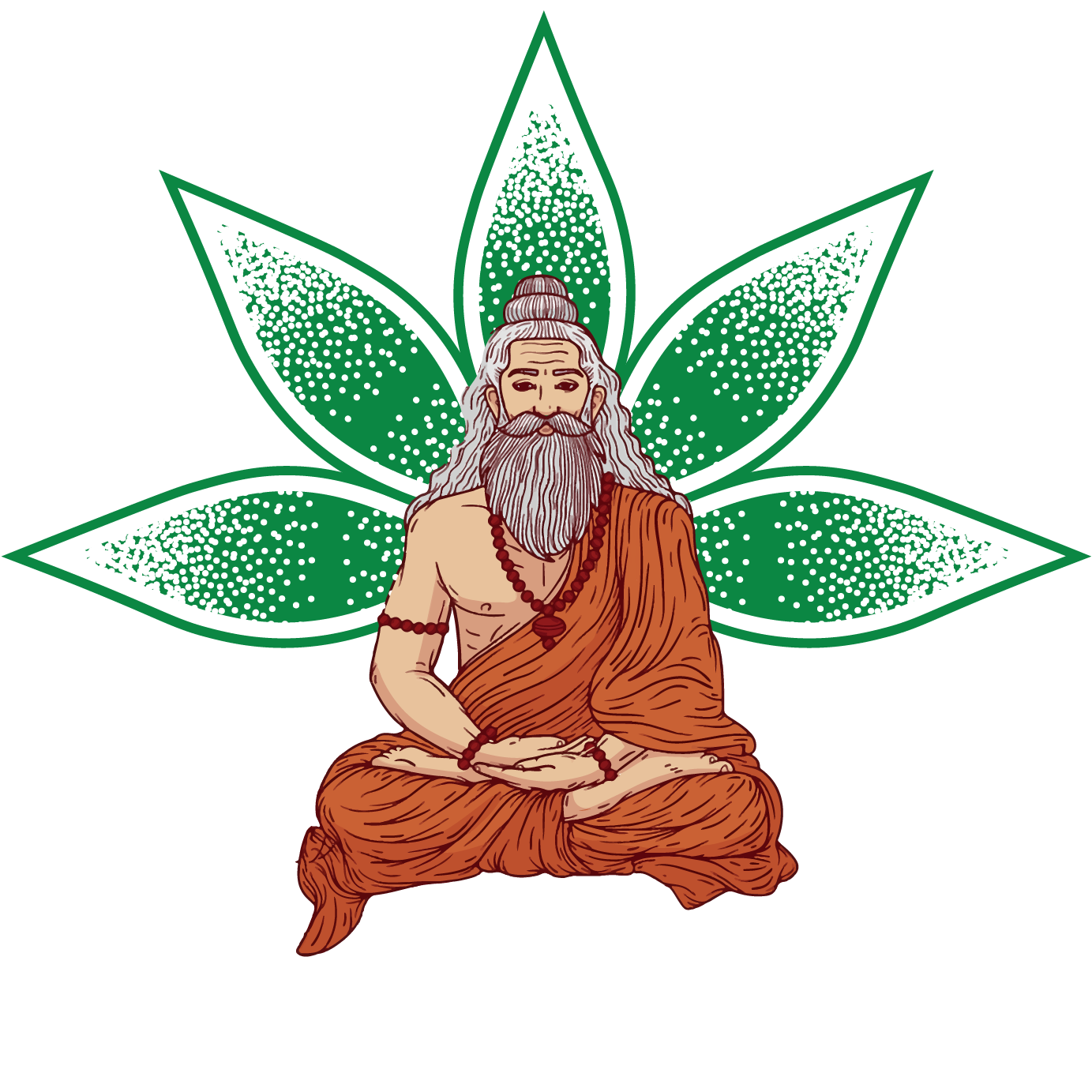
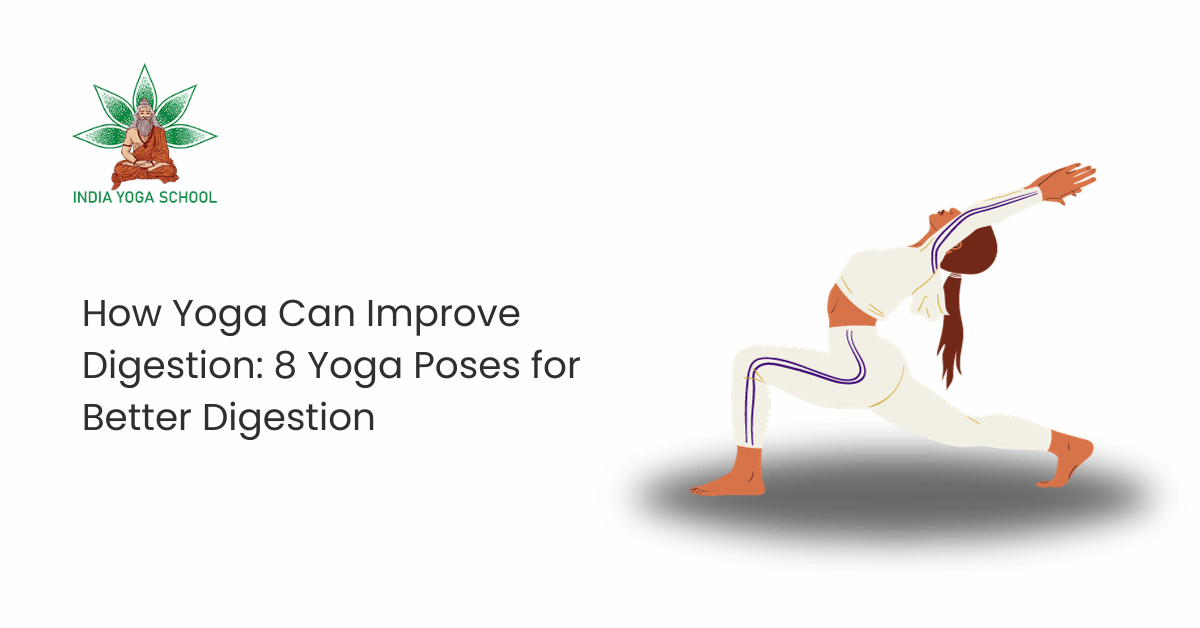
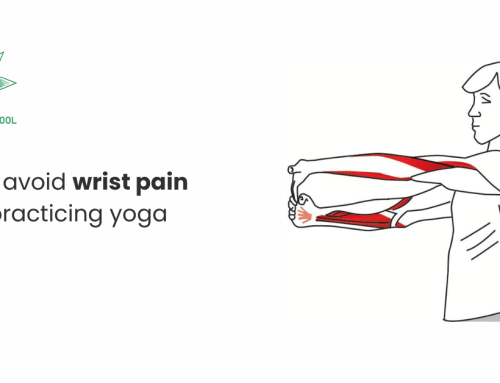

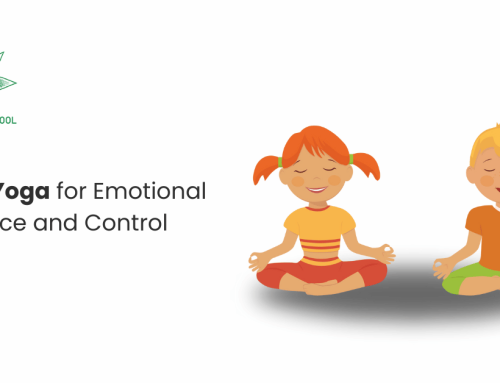
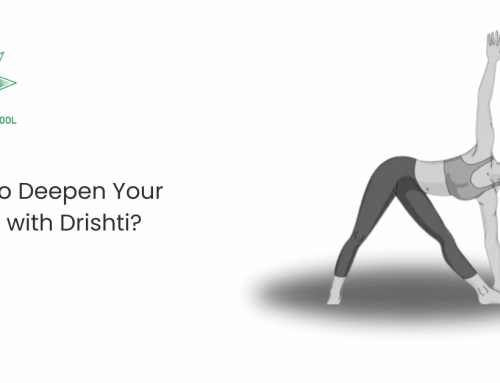
Leave A Comment